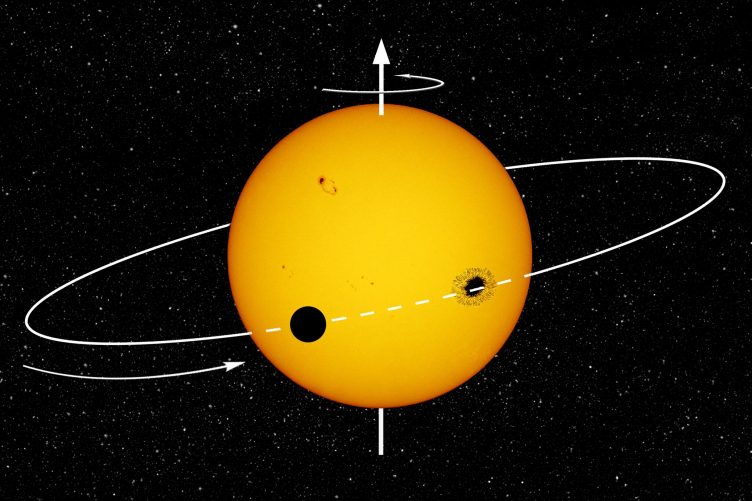The occultation of stellar active regions during the planetary transit can lead to inaccurate estimates of the characteristics of these exoplanets, especially the spin-orbit tilt angle. This was the conclusion of simulations made by a team of astronomers from the Instituto de Astrofísica e Ciências do Espaço (IA) in Portugal, and Institute of Astrophysics of Georg-August University of Göttingen, in Germany.
The Rossiter-Mclaughlin1 (RM) effect has been used to measure the spin-orbit tilt angle in exoplanets, a parameter which can provide crucial information about the planetary formation and evolution processes, and even help to discriminate between different planetary migration models.
Notas:
- The Rossiter-McLaughlin effect is a radial velocity anomaly occurring while the target planet is transiting its parent star. Because of the stellar rotation, one side of the projected disk of the star is moving towards the observer, and has a blue Doppler shift, whereas the other is moving away, and is redshifted. Because of this, when a planet crosses the stellar disk on the plane of the sky, at each individual moment it blocks light with a different averaged velocity.


